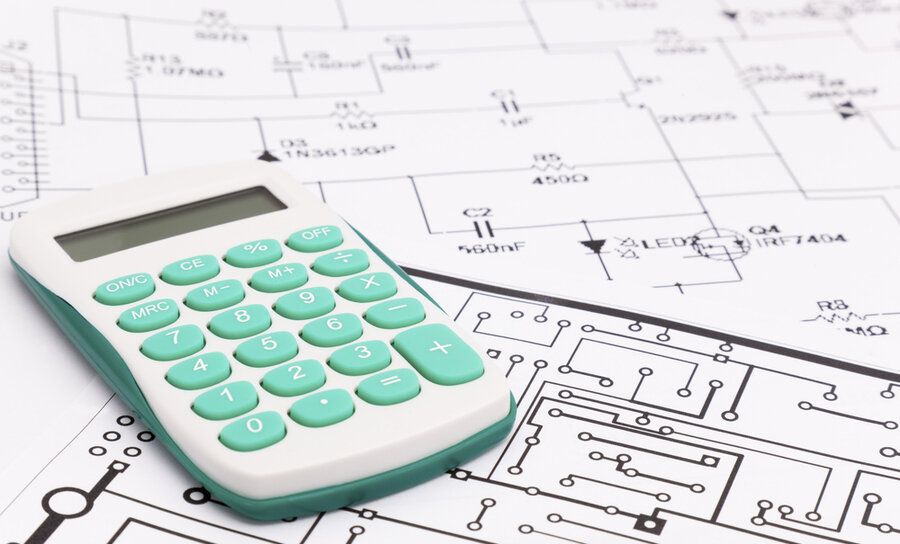Clearing Up Trace Impedance Calculators and Formulas

Table of Contents
While it might not be obvious to the casual or to those who think the mathematics underlying PCB design is largely settled, there is plenty of disagreement regarding the right formula to calculate trace impedance. This disagreement extends to online trace impedance calculators, and designers should make themselves aware of the limitations of these tools.
The Problem with a Trace Impedance Calculator
If you use your favorite search engine to find a trace impedance calculator, you’ll find several. Some of these online calculators are freeware programs from different companies Others just list formulas without citing sources. Some of these calculators will produce results without any context, without listing specific assumptions, and without detailing the relevant approximations their formulas used.
These points are very important when working with, say, designing an impedance matching network for a printed trace antenna. Some calculators will allow you to calculate trace impedance in a number of geometries, e.g., broadside coupled, embedded microstrips, symmetric or asymmetric stripline, or regular microstrips. Other calculators are like a black box; you have no idea which formulas they are using and no way to check the accuracy of these calculations without comparing with a number of other calculators.
To quote Douglas Brooks in an October 2011 article, “In the opinion of many designers, there are no impedance formulas that are now considered adequate.” Breaking down the mathematics of every trace impedance formula and providing a full solution for trace impedance is beyond the scope of this article. Instead, let’s take a look at the empirical trace impedance formulas often specified by the IPC and the more accurate equations provided in Brian Wadell's landmark Transmission Line Design Handbook, which are based on Wheeler’s methodology.
IPC-2141 vs. Wheeler’s Equations for Microstrips
The IPC-2141 standard is just one source of empirical equations for microstrip and stripline impedance. However, the IPC-2141 formulas for microstrip traces actually produce less accurate results than the equations presented by Wheeler. Polar Instruments provides a brief overview of this topic, and the IPC-2141 equation and Wheeler's equations are listed in this article.
IPC-2141 equation for characteristic trace impedance
The accuracy of these equations for microstrip traces with different impedances is also compared in the Polar Instruments article. When the analytic results are compared with numerically calculated results in a given geometry, the results from Wheeler’s equations have a factor ~10 higher accuracy (less than 0.7% error) than the results from the IPC-2141 equation for a microstrip. Despite the higher accuracy provided by Wheeler’s equations, the IPC-2141 equation is still used in many online calculators.
Wheeler’s Equations for Microstrips
Rick Hartley presents a set of impedance equations in an old presentation for surface and embedded microstrips. These equations explicitly include the effective dielectric constant and an incremental trace width adjustment. These factors were not explicit in the Polar Instruments article, although they can be found in the references to Wadell’s and Wheeler's work.
The equations Rick presented are actually Wadell's equations, which were printed in Transmission Line Design Handbook. The Polar Instruments article cited above contains an apparent error inside Wheeler’s characteristic impedance equation: there appears to be a redundant square root inside the logarithm function. One should take note of this and check the equations against the original references when designing a trace impedance calculator for embedded and surface microstrips.
Wheeler’s equations for microstrip trace impedance
Based on the assessment in the Polar Instruments article, Wheeler’s method appears to be the most accurate method for calculating microstrip trace impedance for both embedded and surface traces. However, there is still an approximation enforced on the ratio of the microstrip width to the height above the conducting plane. This makes Wheeler’s equations discontinuous and brings their accuracy into question when the microstrip width is similar to the height of the microstrip above the conducting plane.
Going Forward with a Trace Impedance Calculator
Before, working with a trace impedance calculator, one should be aware of which equations the calculation uses. Not all calculators will explicitly state this. Some calculators opt for Wadell's results, yet they simply state they are "based on Wheeler’s method" without providing references. Others simply present the IPC-2141 equation without stating from where the equation was taken.
Complicating things further, some RF calculators will present other trace impedance equations without citing sources. These equations appear to be an amalgamation of various factors from Wadell's equations, while other factors are omitted or simply reduced through approximations.
One final note regarding online calculators: these calculators may allow you to enter values that fall outside the valid range of their approximation. This produces inaccurate impedance values, yet you wouldn’t know that they are incorrect because the approximation is not listed, nor does the calculator check the inputs for validity.
With high speed and high frequency controlled impedance design, you need design tools that allow you to define the proper impedance for your specific trace configuration on surface layers or on internal signal layers. Altium Designer includes a layer stack manager with an integrated field solver that builds an impedance profile for your board and defines this profile as part of your design. These features integrate directly with your layout tools and run on top of a unified design engine, allowing you to create top quality boards for any application.
If you’re interested in learning more about Altium, you can contact us or download a free trial and get access to the industry’s best layout, routing, and simulation tools. Talk to an Altium expert today to learn more.












